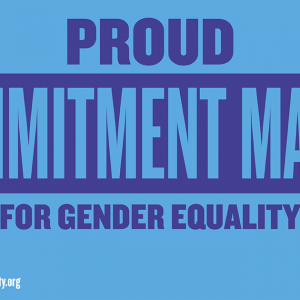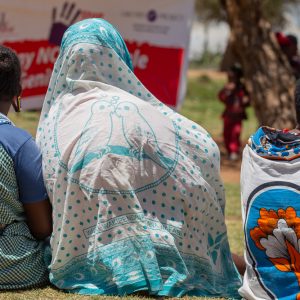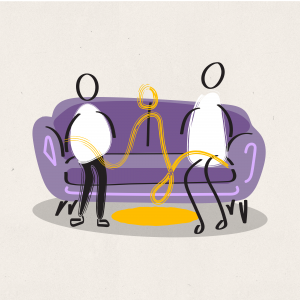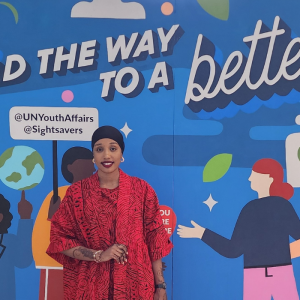A paper published in the Journal of Medical Ethics on 22nd February argues that female genital “nicks” causing minimal harm should be legally permitted. The paper calls for liberal states to allow a lesser cut to fulfil cultural and religious obligations but prohibit forms of FGC that produce significant sexual or reproductive dysfunction. The authors also propose a new categorisation of cutting that is based on the effects of the procedure, rather than the process.
At Orchid Project, we disagree with the proposal to allow a lesser cut, as reducing the extent of cutting still results in a human rights violation and doesn’t address the potentially traumatic effects of FGC. Furthermore, medicalising the practice allows people to feel it is legitimate and disregard a girls’ right to bodily integrity, impeding efforts to end the practice and resulting in an ever-increasing number of women suffering the consequences of FGC.
Allowing a ‘nick’ is not a new suggestion. In 2010, the American Academy of Pediatrics made a similar suggestion, saying: “It might be more effective if federal and state laws enabled pediatricians to reach out to families by offering a ritual nick as a possible compromise to avoid greater harm.” However, this policy was met with major backlash, including a letter to the British Medical Journal (below and in full in a previous blog), and the AAP quickly changed its position to oppose all forms of FGC.
FGC is not a treatment in the child’s best medical interests. Cultural rituals, rites of passage, adult female sexual pleasure and marriageability are not within the scope of appropriate, expert paediatric practice. A girl without a problem is not a patient; the doctor becomes a stranger with no indication to expose, touch or cut the genitalia. Different approaches, including moratoriums on non-medically indicated genital alteration, have been suggested until adolescents or adults can make the decision themselves, e.g. in children with disorders of sex development and circumcised boys. Girls could accuse the AAP of disregarding unconsented damage to their sexual lives and betraying the trust vested in the medical profession. If parents or associates perform the “nick” they take responsibility for any consequences. If doctors charge a fee-for-service, they have an interest in creating a veneer of ‘medical respectability’. The coy presentation of laceration as harm limitation condones FGC and will have worldwide repercussions. The AAP must be condemned for giving ideological succour to medical involvement in ritual FGC. However minor, assaults on children should be named and requests met with a gentle but firm ‘no’.
The idea to reduce harm through a lesser cut has been enacted throughout the world through what is known as ‘medicalisation’ – trained health professionals performing FGC. About 1 in 5 girls who have undergone FGC had the procedure performed by a trained medical professional. In some countries, this number is as high as 3 in 4 girls. UNFPA state that ‘performing FGM, even in a medical setting, violates the fundamental medical mandate to “do no harm”, and it represents a threat to efforts to abandon the practice’. UNICEF state that ‘if medical professionals are seen to perform and uphold the practice, this may strengthen its legitimacy and the social expectation that it will continue’.
We know from those that we work with that identifying the extent of the cut is extremely difficult. The authors propose categorisation based on the effects of the procedure, rather than the process, but this presents challenges, some of which are noted in the paper itself. The paper suggests that there are ‘stark differences between Category 1 and 2 versus Category 3 and 4′ but the experience of those with whom we work indicate that this is not the case. In Indonesia, we have been told that knowing how much of the clitoris is removed and how much harm is caused is difficult to determine unless the procedure is watched. In Indonesia, medical professionals are condoned to perform FGC but there are huge variations between how much of the clitoris one midwife or another may remove, and with what tools they may ‘nick’ the clitoris. Furthermore, the lack of knowledge and awareness often results in clitirodectomy or infibulation being performed – without the knowledge of the cutter, girl or parents. This was corroborated in discussions with Dr Abdul Rouzi, a gynaecologist from Saudi Arabia, who could not stress enough the harmful nature of Type I that he has observed, e.g. cysts and other impacts or meeting people who believed they had undergone the least invasive form of FGC but in reality had been sewn closed.
The article itself points to Egypt as a country that has seen little change – ‘in Egypt, the percentage of women who had any procedure that altered external genitalia performed on a daughter only fell from 77.8% to 71.6% over 5 years from 2006 to 2011’ compared to countries such as Kenya which has seen a drop of 34%. What it does not say is that in Kenya the practice was abandoned by large groups of people in their entirety, e.g. the Kikuyu ethnic group. Egypt, however, provides a case in point of the ‘medicalisation’ of FGC and how it has impeded efforts to end the practice. As documented in UNICEF’s statistical overview, in an effort to improve the safety of the practice, Egypt’s Ministry of Health issued in 1994 a decree permitting doctors in government hospitals to perform FGC. Although reversed in 1995, the ban still permitted the procedure when it was deemed medically necessary. This was seen to legitimise FGC and there was a leap from 55% to 77% of girls being cut by a medical professional.
The authors raise some valid points – legislation may result in the practice going underground and often children do undergo FGC because their parents believe that it is the best option to prepare them for marriage and acceptance within their community. However, the solution for this is not a lesser cut. As demonstrated by our partners, it is work with the entire community to change the social norm so that not cutting becomes acceptable that enables large scale abandonment.
The efforts of our partner Tostan have seen over 7,300 communities abandon the practice and the efforts of the UN Joint Programme on FGM/C have seen over 12,000 communities abandon the practice. It is these efforts that need to be scaled up and those communities that need to be listened to and supported, not a reduction in cutting, which is needed to achieve abandonment of female genital cutting in the next generation.






